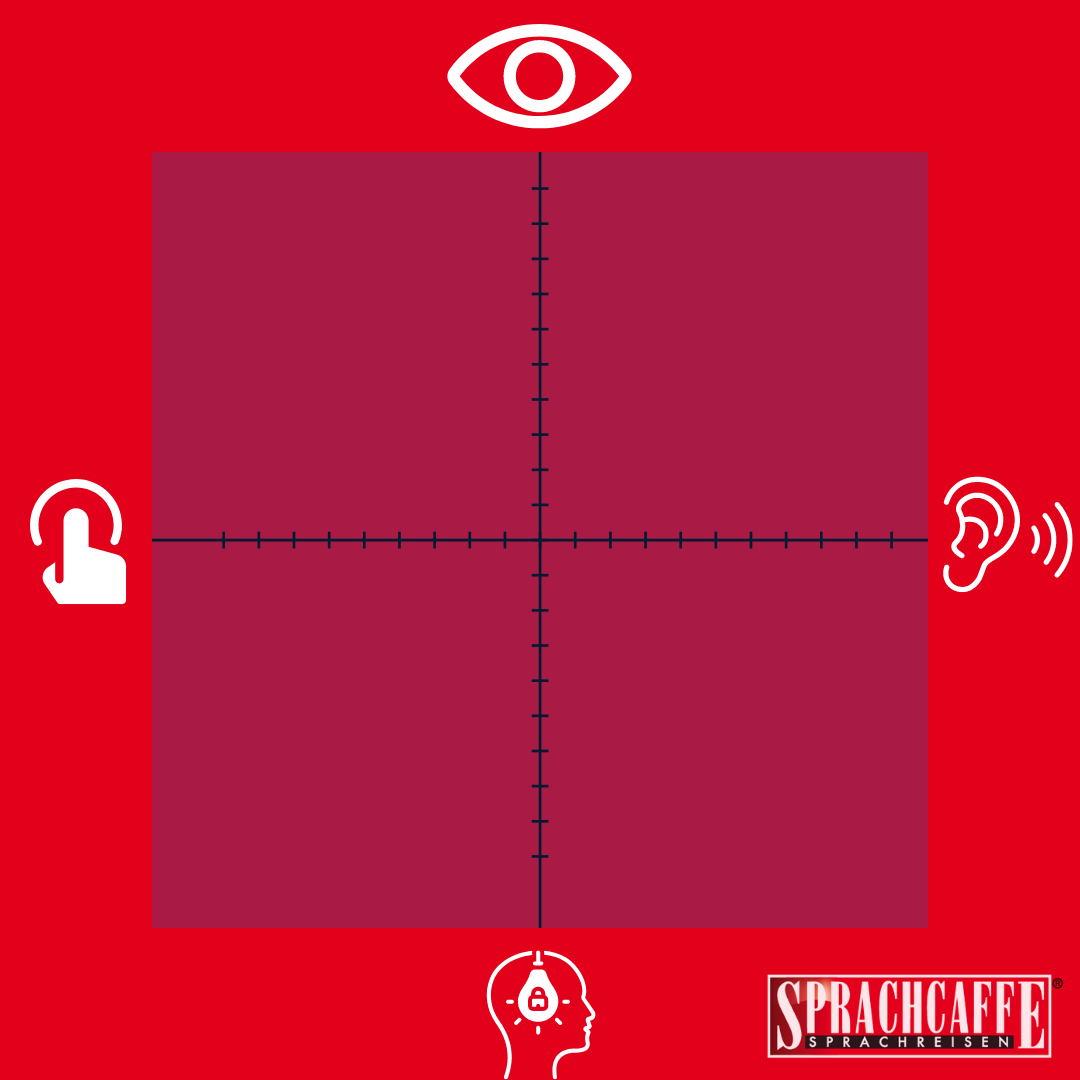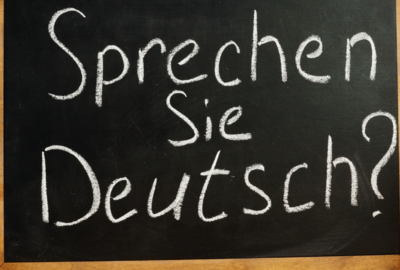
Learning types: Test your learning type

Come join our
Language Trips
Learn foreign languages effectively while experiencing a new culture and having fun
Get a 5% loyalty discount on your next language study trip!
Why is it important to know my own learning type?
Knowing your learning type will help you learn more efficiently and effectively. If you design your learning strategy according to your learning type, you will be able to absorb the information and the learning material better. You will also enjoy learning more. If you adapt your learning environment to your learning type, you will make faster progress. It's motivating, fun, and ultimately gets you to your goal faster.
Here are a few more benefits of learning according to your learning type:
More effective learning: You will learn most effectively if you have a strategy and develop it based on your learning type. So test which learning type you are and choose your learning materials according to your learning type.
Time saving: If you understand your learning material better, you will save a lot of time. To understand the learning material better, you have to test your learning type. This is the only way to find your learning strategy.
Reduction of learning stress: If you do not learn according to your learning type, frustration, impatience and stress can arise. You make little progress and may give up. But if you know your learning type, the opposite is true.
Self-confidence increases: Faster learning successes lead to higher self-confidence. So if you know your preferred learning type, you will have increased self-confidence when learning. This will help you achieve your learning goals.
As you can see, testing your learning type can only be beneficial. In the next step, we will show you how you can easily test your learning type yourself. The test doesn't take long and only requires a little preparation.
The 4 learning types according to Vester
Auditory type of learner
The Auditory learner type learns best by listening and recording.
Visual type of learning
The Visual Learner learns best with pictures, graphics, objects and items.
Intellectual type of learner
The Intellectual learner type learns best through intensive engagement with the subject matter.
Haptic type of learner
Haptic learning types learn best through touch and physical contact.
Learn a foreign language while on vacation.
Test your learning type
Frederic Vester has developed a test to check your learning type. Simple memory tests are carried out. The test persons memorize 10 words, which are to be memorized first by seeing, hearing, reading and finally by touching. After a 30-second break, the subjects are asked to write down the words.
The test is evaluated by writing down the number of correctly written words in an evaluation diagram. Based on this evaluation chart, the testers can ultimately identify whether they are better memorized by hearing (Auditory Learner), objects (Visual Learner), blind touch (Haptic Learner), or simple reading (Intellectual Learner).
However, it is important to note that Vester's findings are not based on empirical evidence. Nevertheless, Vester's test for recognizing learning types is a suitable tool for testing your own learning type.
Take a look at the evaluation diagram and determine your own learning type by means of a self-created test.
Types of learners and foreign languages
Every person is different. This is especially true when learning a new skill or competency, such as learning a new foreign language. It requires a high level of willingness to learn, learning strategy, and absorption of large amounts of information.
In order to learn a foreign language successfully, you should find out what type of learner you are. This will help you to better plan, define and implement your learning strategy and units. In the following, we will introduce you to all learning types and show you how you can best develop a learning strategy based on your learning type.
Visual learners
Visual learners learn a foreign language best with the help of graphics, pictures, or other visually detectable means. For example, a visual learner may learn vocabulary best by drawing sketches for themselves or using pictures in their learning. Making charts and graphs of more complex areas of language learning are also recommended for visual learners.
Haptic learners
Haptic learners learn best when they actively use the language. They especially benefit from hands-on activities and prefer to perform physical activities when learning languages, writing and using gestures to internalize the learning material.
Logical learners
Logical learners prefer a structured approach to language learning. This type of learner particularly benefits from targeted learning strategies and learning units. They like to analyze grammar rules, linguistic structures and learn the language systematically in this way.
Auditory learners
Auditory learners prefer listening to speech. They learn well when they follow conversations, lectures and he interviews. Audio books are also best for the auditory learner type. Auditory learners have a talent in providing the sound of speech and using it.
Social learners
The social learner type loves to learn in groups. They especially benefit from learning the language through interaction with other people. Be it in conversations, or through interactions with native speakers. This type of learner benefits greatly from group language courses. When discussing with each other, sharing information, and practicing in a group, social learners make very rapid progress.
Natural learners
Natural learners are real language talents. They have a talent for learning languages and do not need much time to understand grammar or learn vocabulary. All they have to do is follow the usage of native speakers and they learn almost by themselves.
Writing/Reading Learners
The writing type of learner remembers the learning material particularly well when writing texts, forming sentences or when taking notes and summarizing content. They can concentrate better on the content when taking notes and learn the foreign language more effectively in this way.
Learn English with Sprachcaffe
Have you found your learning type? Then start improving your English with our help! We explain everything you need to know about the English language. From grammar explanations to vocabulary training and much more!




